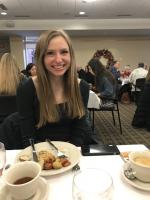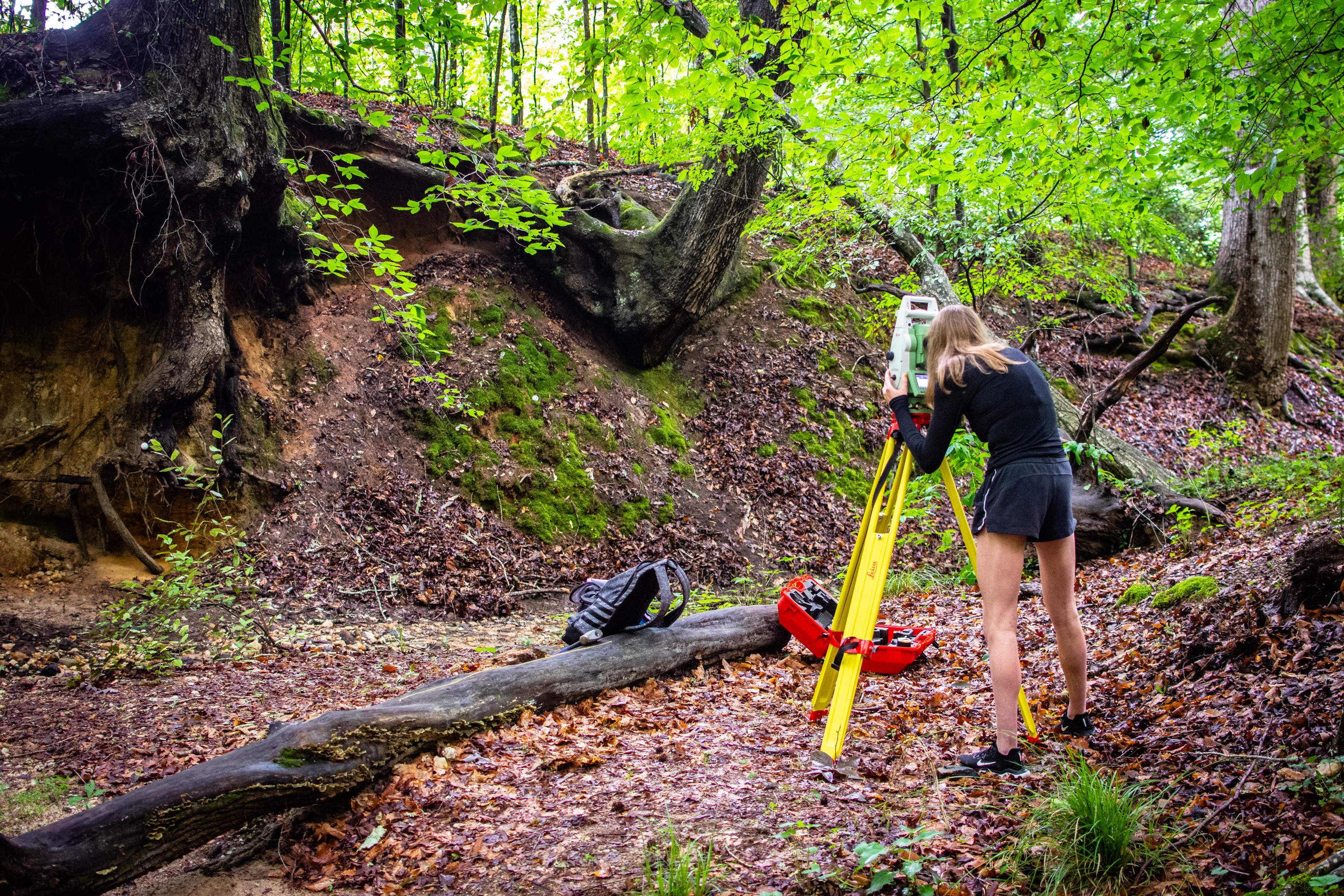Kai Welsh

Kai Welsh is a student at Gustavus Adolphus College currently completing her research at Clemson University under Dr. Brady Flinchum.
The critical zone is defined as the area from the top of the tree line to the base of unweathered bedrock. This environment involves the complex interaction of rock and biological life with soil formation, hydrological networks, and geochemical processes. The role of the structure of the deep critical zone has an influence on surface processes but the amount of influence and why certain topography or features causes specific surface conditions is not strongly understood. Through the use of seismic refraction the topography of the gneiss bedrock in the Piedmont region of South Carolina will be imaged to gain better understanding of the influence of bedrock structure on subsurface and surface geology in Appalachian granitoid.
Blog 2, Week 3.5
June 17th, 2021
It's crazy to believe that I am almost a month into my internship. It has started off as quite the steep learning curve, but I am way further along relative to when I started. Before going into the field to collect my seismic refraction survey in the Piedmont region of South Carolina (leaving tomorrow!!), I have been working in Python to image the subsurface topography of past collected surveys and sharpening my skills in picking the fastest arrival times to get an accurate model. In addition, I helped my mentor with a little side project this past week where we 3D modeled an outcrope of an exposed tree root with underlying soil and weathered saprolite in the South Carolina Botantical Gardens near Clemson, SC (pics below!).
A skill that I wanted to put a particular focus on this internship is to be able to communicate knowledgeably about my reasearch and discuss concepts in a scholarly way with academic colleagues. I have been learning so much about seismology and geophysics these past few weeks and I feel I have a general understanding of my work. However, in order for my work to be illustrated productively to the scientific community (i.e. an AGU abstract). I want to be strong in communicating my results, the methods used, and the implications and importance of critical zone research. Luckily, I am in good hands with my mentor (who I know is going to read this [brownine points]).
Cheers!
Kai


Week 1: Humble Beginnings
June 8th, 2021
My first two weeks have been very informative and has openned my eyes to interesting world of seismology. I have been busy at work educating myself on our research area, the conept of the critical zone and geophysical/geochemical/biological that influence the topography of the critical zone, seismic refraction, and the greater implications of my project through a vast collection of literature and lectures with my mentor. In addition, I have started my official beginning of learning how to code through Python which has started off rather smooth (but I doubt it will stay this smooth). The goal of these first few weeks is to get me ready to process the data in the field which I am beyond excited for.
Outside of work I have fully settled into Clemson, SC where I room with four lovely Clemson students in a townhouse right off Lake Hartwell. I already taken a camping trip to Chattahoochee-Oconee National Forest, explored the urban scene, and successfully been able to transport myself between my house, the Clemson Main Campus, and Clemson's Environmental Technologies Lab without the help of GPS (big win!).
Now onto my goals for the summer!
First Third Goals:
- Familarizing myself with Clemson, SC (and the surrounding cities) and find some good hiking and running trails. As lovely as running on the main campus is, it is surprisingly quite hilly (running on full inclines are not fun!) and the concrete is giving me shin splints. Also, I really want to do some paddle boarding soon!
- Gain a good understanding of the current research by building a literature base.
- Learn basic phython programming to supplement my data processing when both in the field and when we return.
- Gain a good understanding on the seismic refraction method including how the measurement is calculated, how a survey works, and the specifics of seismic topography.
Second Third Goals:
- Be able to code phython without a given template and not having to look up things or refer to my notes.
- Create a very, very beautiful (i.e. modelled properly) seismic refraction transect from the field data collected.
- Build relationships with the peers around me both at Clemson and while in the field.
Last Third Goals:
- Be able to adequatelly figure out the next steps in my research project and able to communicate knowledgeably about my research and discuss concepts in a scholarly way.
- Submit my AGU abstract.
- Decide if a future in seismlogy is for me.
- Have good data, information, and literature background to procedure a senior thesis this fall through research completed this summer.
Until the next blog! - Kai


